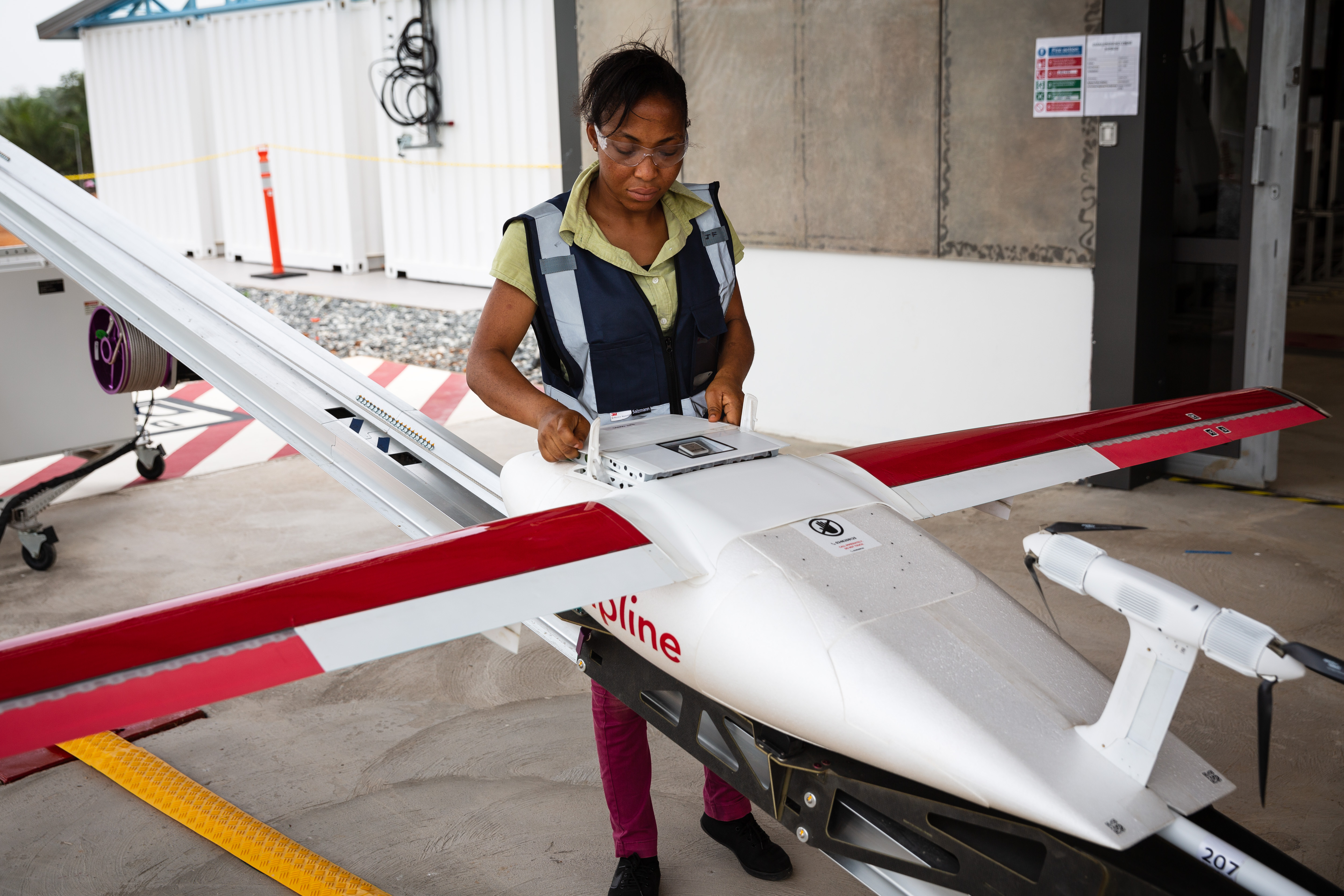As global healthcare systems look for ways to cope with the COVID-19 pandemic, one place they are turning to for help is robots.
Although robots are in their early stages, as their use spreads, their costs will fall. As their costs fall, the rate of adoption will rise, leading to new, better and cheaper machines.
Here are updates on two companies using robots for different healthcare applications, one in logistics delivering medical supplies and the other as an aid to surgery.
UPS (NYSE:UPS)
Background: UPS is the world’s largest package delivery company, with a market capitalization of $87.6 billion. Its operations include a cargo airline, freight-based trucking, and 5,000 franchised UPS stores. In 2019, it had net income of $4.4 billion and revenues of $74 billion.
Performance: The shares are are down 14% year-to-date with most of the damage in March.
Discussion & Outlook: UPS has been testing unmanned robot drones for years. Its first efforts were delivering time-sensitive drugs in remote parts of Ghana and Rwanda with patchy road and air links.

In early 2019 UPS began testing drone delivery of blood and tissue samples between hospitals in Raleigh, North Carolina. In the fall, it received wider approval for a drone airline. The certification lets UPS fly as many drones as it wants, day and night with cargo that weighs more than 25 kg (55 lbs.)
UPS notes on its website that it transports more than 3% of global GDP every day and about 6% of U.S. GDP. It is a dominant, deep-pocketed player with a strong business in a highly competitive field. It sees itself as a technology company and is moving into new area, including drone delivery.
UPS is working with the U.S. government – and globally with other governments – to transport COVID-19 testing kits, personal protection equipment, and medical devices needed in support of public safety.
First-quarter results, to be released on Apr. 28, will give us an insight into how COVID-19 has affected its business.
Dividend: UPS has increased its dividend every year since 2010. The latest was a 6% increase in December, effective with the March payment. The $4.04 annual dividend yields 3.98% and would appear safe.
iShares U.S. Medical Devices ETF (NYSE: IHI)
Background: This ETF is focused on U.S. manufacturers in the medical device sector, many of whom are involved in manufacturing medical and surgical robots.
Performance: The ETF is up 11.45% since being recommended last June. They are up 18% in the past month, as the market has rebounded, outperforming the broader market in line with the healthcare sector in general.
Portfolio: The ETF was launched in 2006 and has $4.6 billion in assets. It holds 56 stocks, but five holdings account for about half of its value.
The companies in this ETF are the biggest and most financially stable in the sector, with strong businesses that are diversified by geography and product line. Many have turned their resources over to the COVID fight.

The biggest is Abbott Labs (14%), which sells a range of generic drugs as well as medical devices, diagnostic tools, and nutrition products. Abbot has adapted a toaster-sized machine normally used to detect strep throat to test for COVID-19. It is apparently the fastest available, with positive results showing up within five minutes and negative results within 13 minutes.
Medtronic is the second largest holding (12%). It’s a leader in surgical robots and is working with the U.S. government to ramp up ventilator production. By the end of June, it expects to make 1,000 ventilators a week.
The number three holding is ThermoFisher Scientific (12%), which is producing 100,000 COVID testing kits a day. Number four Danaher Corp. (5.5%) has received approval for a quick COVID test.
Key metrics: The ETF has a management fee of 0.43% and a modest trailing 12-month dividend yield of 0.4% Any distributions would be subject to U.S. withholding tax.
Conclusion: These companies have enjoyed a strong rebound and are well positioned for gains in a post COVID world. But their customers may scale back purchases in the short term as they cope with the COVID fallout.
(This is an edited version of an article appeared in the April 20, 2020 edition of the Internet Wealth Builder.)

0 comments on “Two ways to invest in healthcare robots”